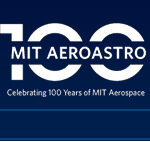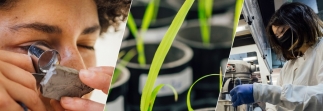 Last week, MIT’s Department of Aeronautics and Astronautics celebrated its 100th anniversary with a three-day Centennial Symposium. The events included a panel with nine astronauts, all MIT alumni, and a talk by inventor Elon Musk, cofounder of the company SpaceX, which has built several rockets and whose goal is to fly people to other planets, like Mars. Sending more humans into space was one of the themes of the celebration.
Last week, MIT’s Department of Aeronautics and Astronautics celebrated its 100th anniversary with a three-day Centennial Symposium. The events included a panel with nine astronauts, all MIT alumni, and a talk by inventor Elon Musk, cofounder of the company SpaceX, which has built several rockets and whose goal is to fly people to other planets, like Mars. Sending more humans into space was one of the themes of the celebration.
The AeroAstro department has been at the forefront of aerospace innovation since it started the country’s first aeronautical engineering course in 1914. In 1961, for example, members of the MIT Instrumentation Lab (now the Draper Lab) developed the computer systems for the Apollo program, which made it possible for Neil Armstrong and MIT alumnus Buzz Aldrin to walk on the moon in 1969.
“[Apollo] became an icon of what we can accomplish through technology,” Ian Waitz, dean of the School of Engineering and a professor of aeronautics and astronautics, told the MIT Spectrum.
As the aero-astro field has grown to include the study of unmanned aircraft, flexible spaces suits, and small satellites, MIT’s department is more popular than ever. “We’re seeing a 50% increase in our enrollment in the last two years,” said AeroAstro Department Head Jaime Peraire.
Explore Professor Waitz’s research and Professor Peraire’s research in the Open Access Articles collection in DSpace@MIT, where it is openly accessible to the world.
Since the MIT faculty established their Open Access Policy in March 2009 they have made thousands of research papers freely available to the world via DSpace@MIT. To highlight that research, we’re offering a series of blog posts that link news stories about scholars’ work to their open access papers in DSpace.

